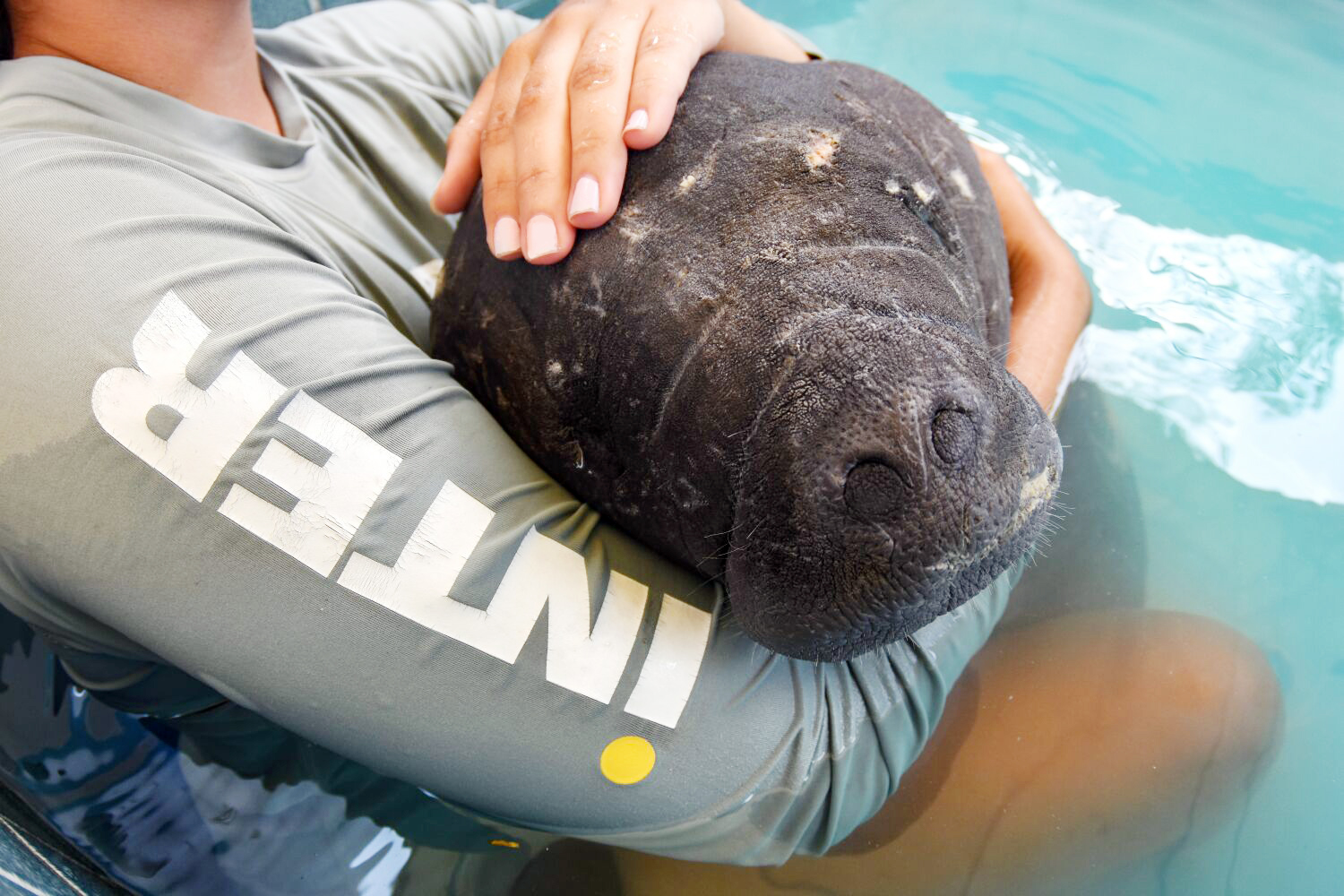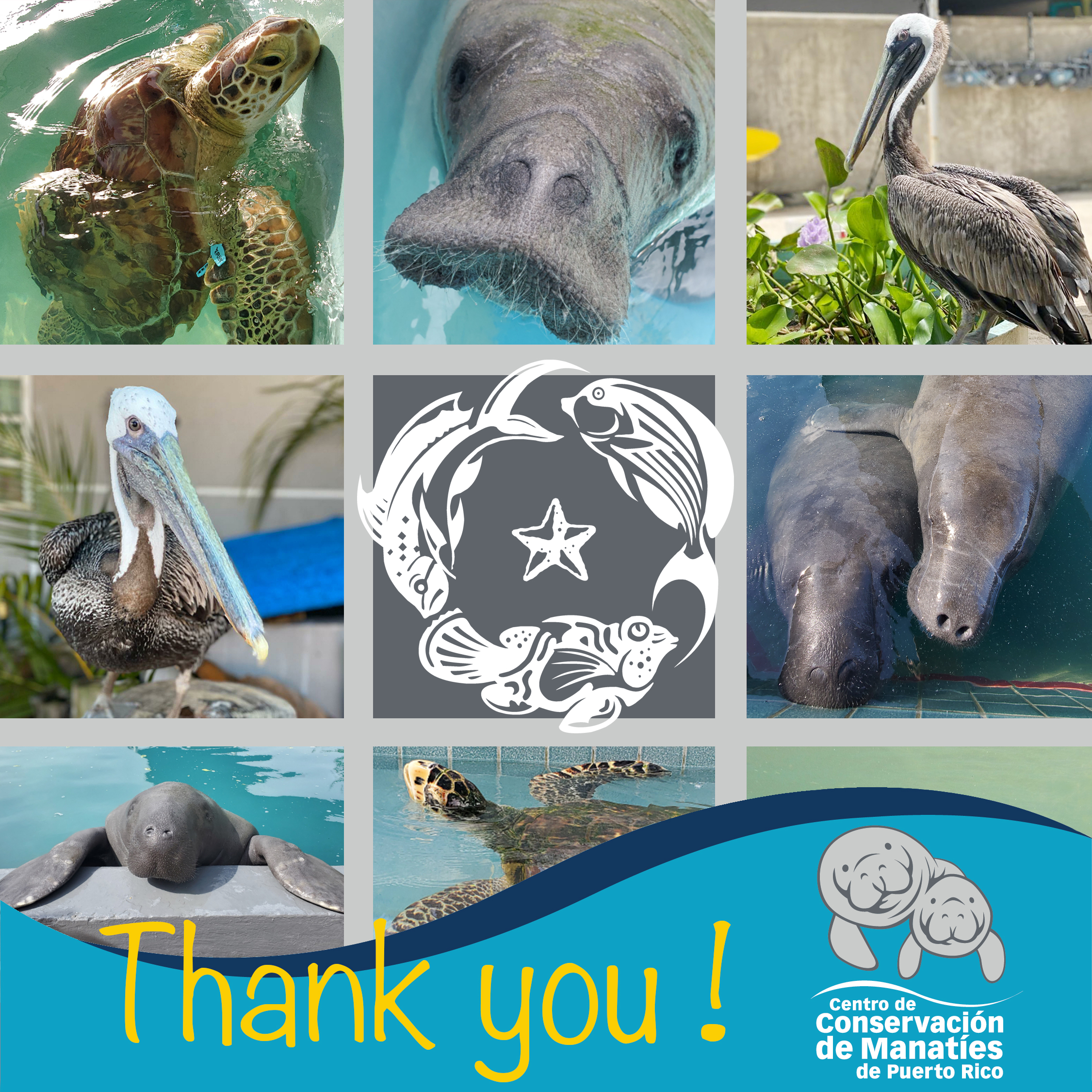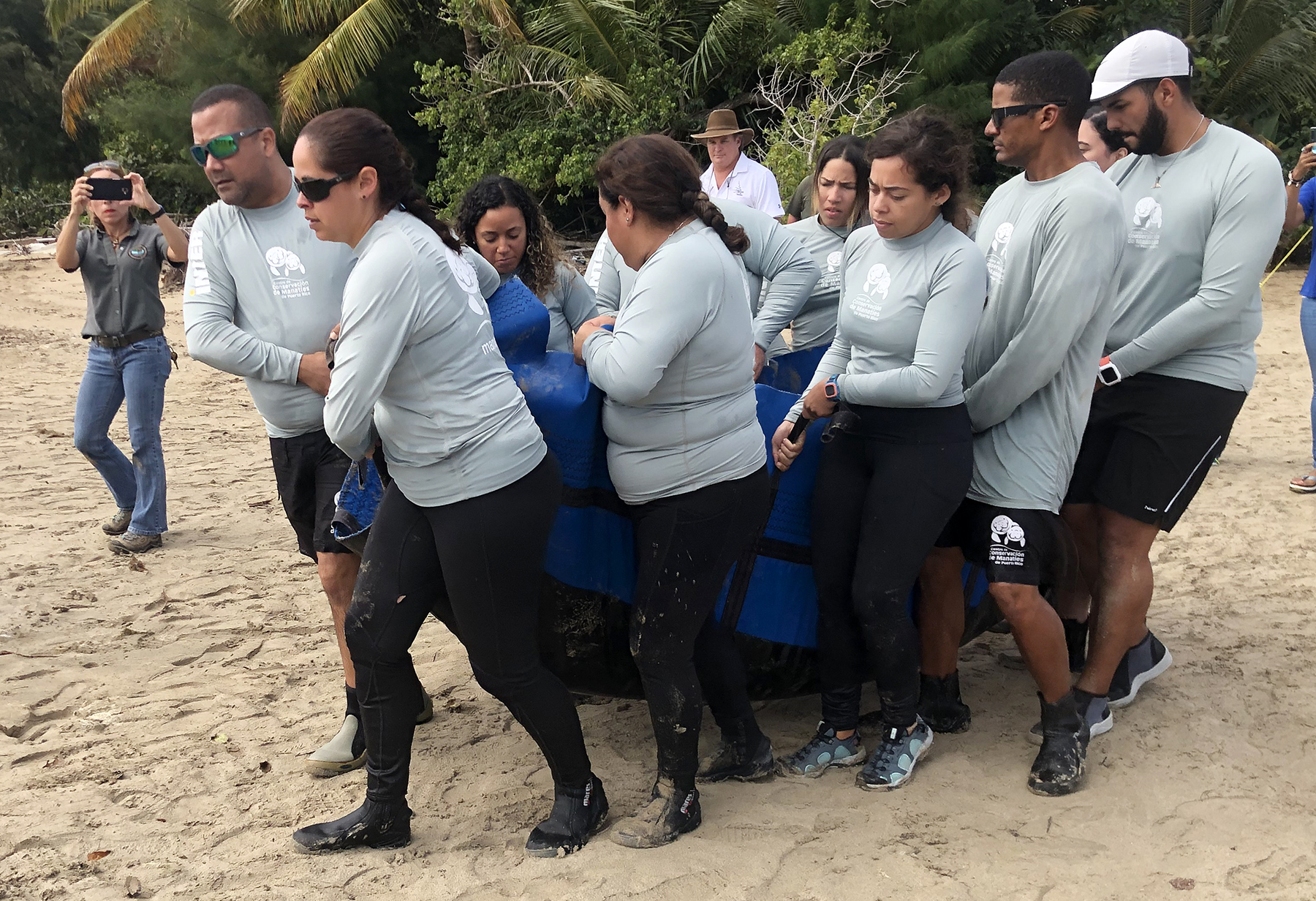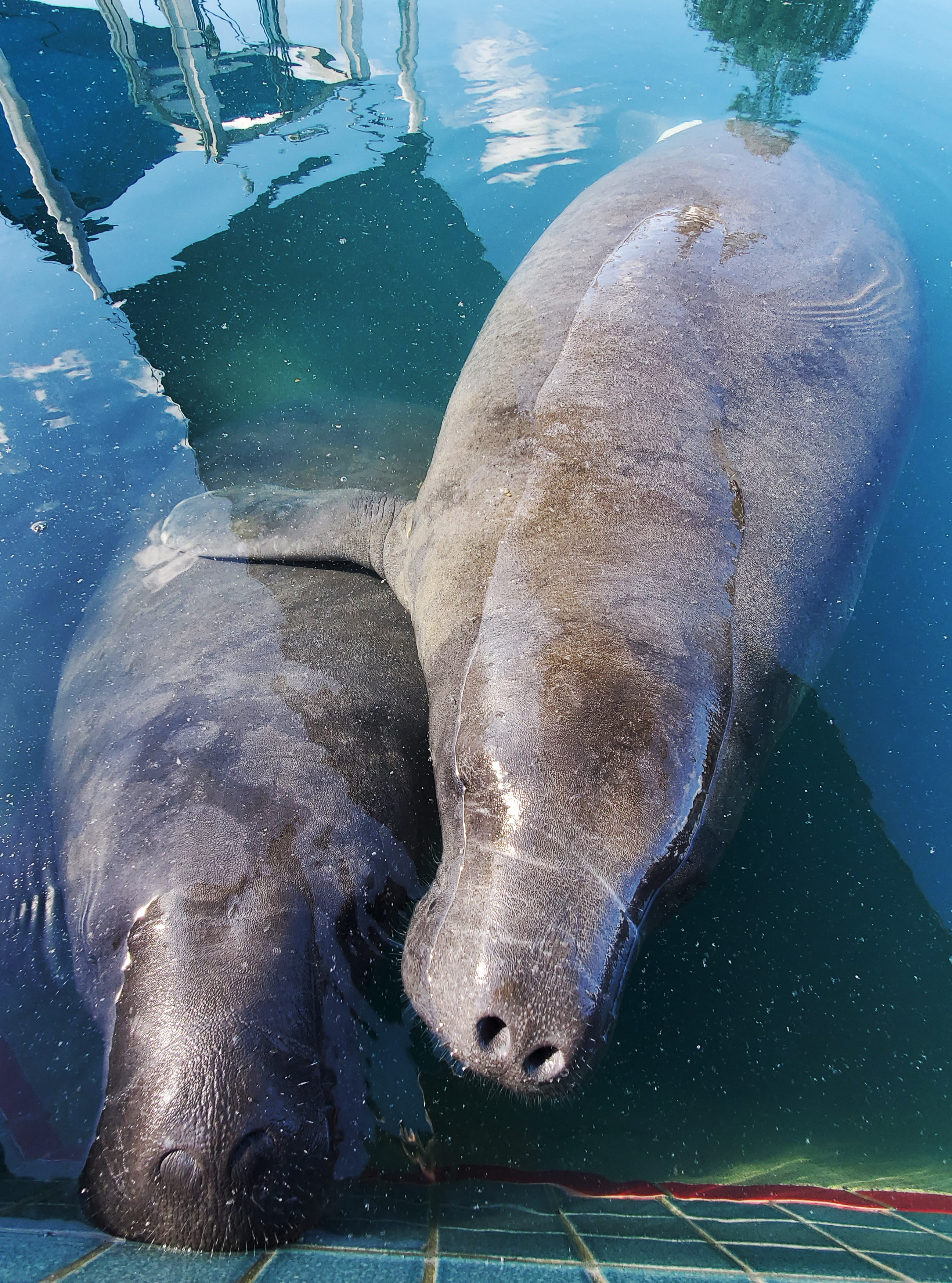
El Centro de Conservación de Manatíes tienes oportunidades laborables abiertas. Busca en esta página que trabajos están disponibles.
Category Archives: Manaties
Dallas World Aquarium–A guardian angel

During these difficult times of quarantine, social isolation, and loss of life as a result of COVID-19, the Puerto Rico Manatee Conservation Center has also been affected in different ways. The Center has suffered economically from this horrible pandemic, while we continue to work daily in the care of our current patients (2 manatees, 4 sea turtles, and 5 pelicans). But in harsh times, there are always heroes that serve as guardian angels of the smaller ones.
This is why we want to thank Dallas World Aquarium (DWA) immensely for their help and support at this time with a significant donation to allow us to continue to operate. That despite the fact that the aquarium back in Texas remains closed due to COVID-19. DWA extended their helping hand to us, to Puerto Rico, and to our manatees, sea turtles and pelicans in order to continue providing the necessary care and attention to each of our marine patients in rehabilitation.
Thank you DWA for being that guarding angel.
Campaña “We can get through this together”
 El Centro de Conservación de Manatíes ha comenzado una campaña publicitaria ante la pandemia del Coronavirus COVID-19.
El Centro de Conservación de Manatíes ha comenzado una campaña publicitaria ante la pandemia del Coronavirus COVID-19.
La misma detalla que juntos podemos superar esta situación, y exhorta a unirse al Centro ayudando a los animales marinos a sobrevivir durante la pandemia a través de una donación.
Los artes de la campaña incluyen a los pacientes del Centro: manatíes, tortugas marinas y pelicanos. Al momento el Centro atiende a dos manatíes (Guacara y Loíza), 4 tortugas marinas (Bagua, Anki, Mydas y Chely), y a 5 pelicanos (Coco, Artemis, Hestia, Apolo y Demeter). Además, personal del Centro atiende de forma remota un manatí Antillano en Guyana y un manatí amazónico en Colombia.
Se exhorta a todos los que puedan en este momento a apoyar al Centro, ya que la pandemia y la situación económica que esto ha creado ha disminuido grandemente las aportaciones corporativas. Los donativos se pueden hacer en la página http://manatipr.org/donaciones/
Juntos podemos sobrepasar esta pandemia si nos mantenemos unidos como pueblo, en la casa, y llevando a cabo las recomendaciones de salubridad.
Así lo lograremos.
El Centro y la Pandemia / The Center and the Pandemia
El Centro de Conservación de Manatíes permanecerá abierto todos los días para tratar manatíes enfermos, heridos y huérfanos y otra vida silvestre marina. Sin embargo, estaremos cerrados a visitas públicas. Además, se han modificado los siguientes programas y servicios:
• Nuestro programa de voluntariado se suspende temporeramente.
• Nuestro voluntariado estudiantil como parte de las clases se suspende temporeramente.
• Todos los programas educativos y visitas se cancelan hasta el 1 de abril de 2020.
• Todas las experiencias de cuidador por un día se cancelan hasta el 1 de abril de 2020.
Como todos, esta pandemia nos está afectando financieramente. Cuando sea posible, alentamos a nuestros seguidores y patrocinadores a que envíen sus donaciones o hagan una promesa de donativo para estos meses de primavera y verano. Es la única forma que podemos seguir rescatando y cuidando de animales silvestres.
Nos tocará a todos superar este evento pandémico, al mismo tiempo que cuidamos a nuestros manatíes, tortugas marinas y pelícanos rescatados. Juntos podremos.
Gracias y mantengámonos todos a salvo.
Dear Friends,
The Manatee Conservation Center will remain open daily to treat sick, injured, & orphaned manatees and other marine wildlife. However, we are now closed to public visitation. Additionally, the following programs and services have been modified:
• Our volunteer program is temporarily suspended.
• Our student volunteering as part of classes is temporarily suspended.
• All educational programs and visits are cancelled through 1 April 2020.
• All caretaker for a day experiences are cancelled through 1 April 2020.
Like everyone, we are being hit hard financially by this pandemic. When possible, we encourage supporters to maintain your donations coming or make a pledge for these spring and summer months. Is the only way we can continue to rescue and treat wildlife.
It is going to take from all of us to surpass this pandemic event, at the same time that we care for our rescued manatees, sea turtles and pelicans. Together we can.
Thank you and let’s all keep safe.
Two manatees released back to the wild
 I am happy to announce that we successfully released back to the wild two manatees in Puerto Rico.
I am happy to announce that we successfully released back to the wild two manatees in Puerto Rico.
Tureygua and Mabo, both males, were rescued as calves in 2015 and 2016 in Isabela and San Juan, respectively. They were released today in the mouth of the Espíritu Santo River in Rio Grande at 475 lbs each.
We would like to take this opportunity to thank all involved in the rescue and care of these two manatees, particularly the Department of Natural and Environmental Resources, US Fish and Wildlife Service’s Caribbean Ecological Services, and Inter American University, all instrumental in this accomplishment by their support, permitting and endorsement of the Puerto Rico Manatee Conservation Center . Gracias, gracias, gracias for their support on our conservation work. We thank as well the three veterinarians that worked with these manatees, Antonio Rivera, Ricardo Martínez and Lesly Cabrias that looked after their medical care. But of upmost importance, thanks are due to the entire staff of the Manatee Center and its over 60 volunteers, who day and night looked after the husbandry of the manatees and their tank habitats during these 4 years.
The manatees were fed through in-kind donations of Caribbean Produce, Hill Brothers, Econo, Costco, Puerto Rico Supply, Banco de Alimentos, as well as Coca-Cola Bottling Company (bottled water). Dallas World Aquarium, EcoElectrica, Plaza Las Americas, Georgia Aquarium, Coqui Charities, Laboratorio Clínico Jollymar, Bahia Beach Resort, among others, provided support for their rehabilitation as well. During the passing of Hurricane Irma and María through Puerto Rico, the organizations part of the Manatee Rescue and Rehabilitation Partnership also donated supplies for the care of these two manatees. The contribution of all these “manatee friends” was key to our rehabilitation work with Tureygua and Mabo.
Both manatees will be monitored through satellite telemetry in cooperation with biologists from the foundation Alma de Bahía at Bahía Beach Resort.
Again, thank you for your help and participation in their rescue, rehabilitation and today’s release back to the wild.


